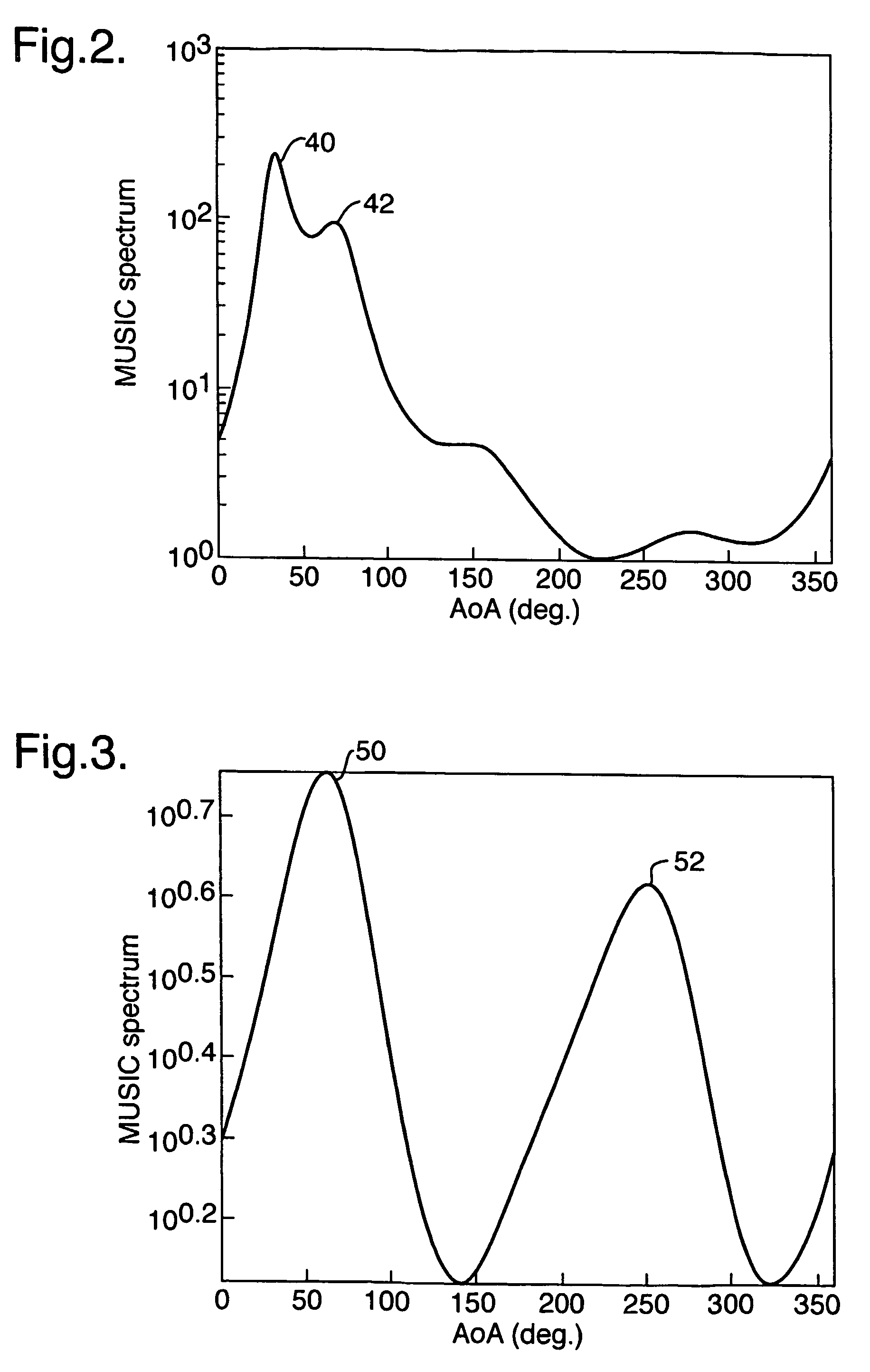Direction finding
a direction finding and direction technology, applied in the direction of direction finders, multi-channel direction-finding systems using radio waves, radio wave direction/deviation determination systems, etc., can solve the problems of reducing affecting the service life of receivers, etc., to achieve the effect of reducing cost and bulk
- Summary
- Abstract
- Description
- Claims
- Application Information
AI Technical Summary
Benefits of technology
Problems solved by technology
Method used
Image
Examples
Embodiment Construction
[0037]Referring to FIG. 1, a direction finding system of the invention is indicated generally by 10. As illustrated for the purposes of this example, the system 10 incorporates four antennas 12 each of which is conventional, i.e. omnidirectional. In general, as many antennas may be used as are required to detect a desired number of emitters, i.e. M antennas for M−1 emitters. Signals pass from the antennas 12 via respective buffer amplifiers 14 to first and second multipole switches SW1 and SW2, the amplifiers 12 being connected to respective input poles b, c, d and e of both switches. The multipole switches SW1 and SW2 have respective movable contacts C1, C2 which allow any of the associated input poles b to d in each case to be connected to respective output poles f.
[0038]The output pole f of the first switch SW1 is connected to a first phase shifter P1 introducing a phase shift of φ1, and the output pole f of the second switch SW2 is connected to second and third phase shifters P2...
PUM
 Login to View More
Login to View More Abstract
Description
Claims
Application Information
 Login to View More
Login to View More - R&D
- Intellectual Property
- Life Sciences
- Materials
- Tech Scout
- Unparalleled Data Quality
- Higher Quality Content
- 60% Fewer Hallucinations
Browse by: Latest US Patents, China's latest patents, Technical Efficacy Thesaurus, Application Domain, Technology Topic, Popular Technical Reports.
© 2025 PatSnap. All rights reserved.Legal|Privacy policy|Modern Slavery Act Transparency Statement|Sitemap|About US| Contact US: help@patsnap.com



